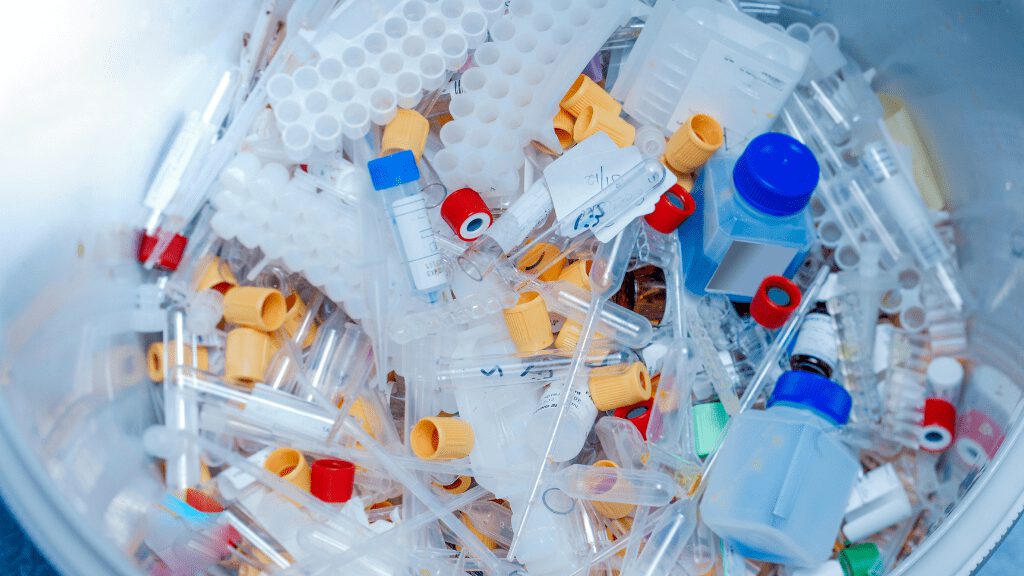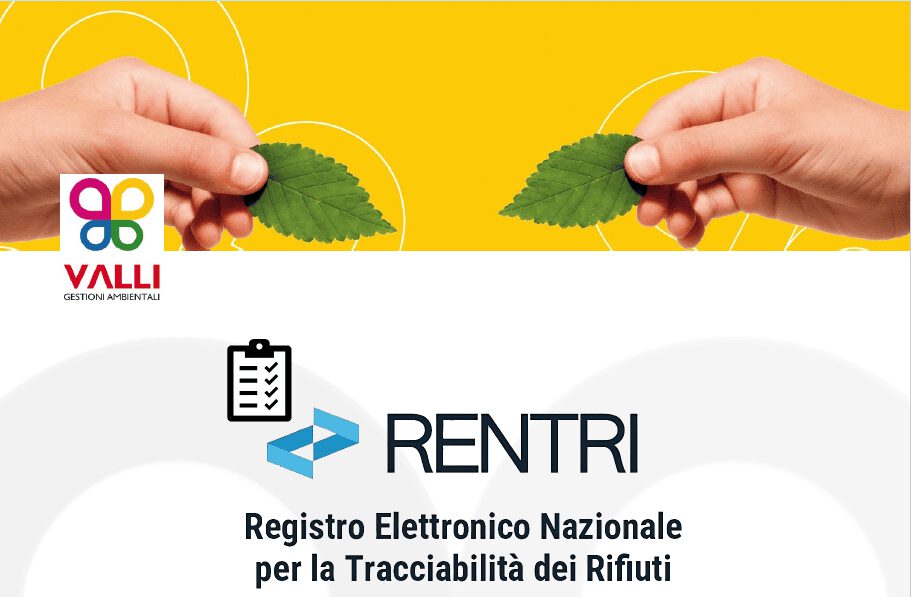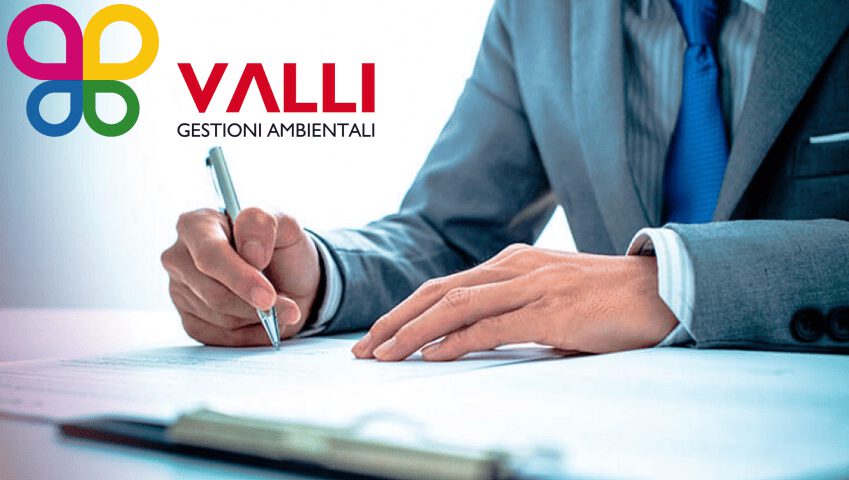The importance of proper medical waste management cannot be stressed enough, especially in an era characterized by a growing attention to public health and environmental sustainability.
Medical waste, due to its potential hazardousness, requires specific treatment and disposal procedures to prevent risks to human health and the environment. This article aims to explore the various types of medical waste in detail, offering a comprehensive guide to their classification and correct management, in line with current regulations and best practices in the sector.
Guide to the different types of medical waste
Classifying medical waste is the critical first step in ensuring its safe treatment and disposal. This waste can be divided into different categories, each of which requires specific attention.
- Infectious waste: This is waste that can contain pathogens in concentrations that can cause disease. These include waste from operating theatres, testing laboratories and isolation wards.
- Hazardous waste: This includes waste that poses chemical hazards, such as expired or unused drugs, and materials containing heavy metals.
- Sharps: Objects that can cut or puncture, such as needles, blades, and broken glassware. This waste requires puncture-resistant containers for safe disposal.
- Radioactive waste: Materials contaminated with radioactive substances used in medical settings, such as in radiotherapy or radiological diagnostics.
The correct recognition and subsequent segregation of this waste from the point of generation is essential to minimize the risk of cross-contamination and to facilitate disposal operations.
Types of Medical Waste: Classification and Management
Medical waste management involves a series of steps from its generation to final disposal, following protocols that aim to protect both public health and the environment.
- Collection and transport: After proper segregation, waste must be collected and transported safely to treatment or disposal facilities.
- Treatment: Depending on the type, waste may require specific treatments, such as incineration for infectious waste or sterilization for certain types of hazardous waste.
- Disposal: The process ends with the final disposal of the treated waste, which may include landfill for inert materials or incineration.
The proper management of medical waste is a shared responsibility that requires the attention and commitment of all healthcare professionals, from medical facilities to research laboratories. National and international regulations establish the minimum requirements for safe management, but it is also essential to adopt good practices that go beyond compliance with current laws.
What are the rules on medical waste
In Italy, the disposal of medical waste is regulated by a set of regulations that aim to ensure public safety and environmental protection.
Legislative Decree 152/2006, known as the “Consolidated Environmental Act”, represents the cornerstone in waste management, establishing fundamental principles for the correct disposal and classification of medical waste.
In addition, Ministerial Decree 254/2003 provides detailed guidelines on the management of hazardous medical waste, outlining specific procedures for collection, transport, treatment and final disposal.
These regulations emphasize the importance of waste segregation at the point of generation and impose strict standards for the treatment of infectious and hazardous waste, such as incineration or heat treatment. In addition, for sharp and prickly medical waste, specific safety containers are provided to prevent injuries during handling.
Italian legislation aligns with international standards, promoting waste management practices that aim to reduce environmental impact and maximum protection of public health.
What happens to medical waste?
The management and disposal of medical waste are issues of fundamental importance for the protection of public health and the protection of the environment.
After its generation, medical waste is collected and transported to specialized plants, where it undergoes specific treatments according to its classification. Treatment processes aim to neutralize the biological, chemical and physical hazards associated with this waste, making it safe for final disposal.
Treatment techniques vary: infectious waste, for example, can be subjected to steam sterilization, incineration, or chemical treatments, to destroy pathogenic microorganisms.
Sharps, such as needles and blades, are usually incinerated or treated to render them harmless before disposal in safe landfills. Chemical and pharmaceutical waste, on the other hand, require chemical neutralization or incineration processes at elevated temperatures to avoid environmental contamination.
Final disposal varies: while some materials can be recycled or recovered, most treated medical waste is disposed of in controlled landfills or specialized incinerators, following strict environmental protocols to minimize the impact on human health and the ecosystem.
What are the 3 types of waste disposal methods?
The methods of disposing of medical waste are mainly divided into three categories:
- incineration
- Chemical treatment
- Physical sterilization
Incineration is one of the most common techniques, which consists of burning waste at high temperatures to reduce its volume and neutralize biological hazards.
This method is particularly suitable for infectious and hazardous waste, but requires specialized facilities and environmental controls to limit harmful emissions.
Chemical treatment, on the other hand, uses chemicals to disinfect and neutralize liquid and solid waste. This mode is often used to treat specific wastes that cannot be incinerated, such as certain types of pharmaceutical waste.
The Physical sterilization, which includes methods such as autoclaving (i.e. with the use of an autoclave for radiation sterilization), is mainly used for non-sharp infectious waste. These processes eliminate pathogenic microorganisms through the application of heat, pressure, or radiation, making waste safe for final disposal in landfills or for the recovery and recycling of non-hazardous materials.
Each disposal method is chosen according to the type of waste and the specific environmental and health regulations in force, with the aim of minimizing the environmental impact and health risks.
How is waste classified in healthcare?
Medical waste is divided into categories based on its potential biological, chemical and physical risk and is divided into 4 macro categories:
- Infectious Waste
- Hazardous Waste
- Sharps Waste
- General Waste
Infectious waste includes anything that is contaminated with blood, body fluids, or other potentially infectious biological materials.
Hazardous waste includes chemical, pharmaceutical, and radioactive waste that poses specific health and environmental risks.
Sharps waste, such as needles and scalpels, are in a category of their own because of their potential to cause cut or puncture injuries.
Finally, there is general waste, which, despite coming from healthcare environments, does not present significant risks and can be managed like common household waste. This classification allows healthcare facilities to adopt targeted and effective waste management strategies, ensuring the safety of staff, patients and the environment.
Local and international regulations provide detailed guidelines on the classification and management of medical waste, emphasizing the importance of accurate segregation from the point of generation to facilitate safe treatment and disposal.
What is the medical waste that requires particular disposal methods?
Some medical waste requires special disposal methods due to its nature or the risk it poses. Infectious waste, for example, must be treated with methods that ensure the elimination of pathogens to prevent the transmission of diseases.
These may require incineration or high-pressure heat treatments. Sharps waste, due to the risk of injury and infection, needs rigid and resistant containers for its safe disposal, as well as specific thermal or chemical treatments.
Chemical and pharmaceutical waste, which can include toxic and environmentally hazardous substances, requires chemical neutralization or incineration procedures in specialized plants.
Finally, radioactive waste produced by medical or diagnostic treatments needs storage and disposal conditions that ensure protection from harmful radiation. The management of this waste follows strict protocols defined by national and international regulations, with the aim of minimizing the environmental impact and ensuring the safety of all those involved.
Why choose Valli Gestioni Ambientali for the Disposal of Medical Waste
Choosing a reliable partner for medical waste management and disposal is crucial for healthcare facilities that are committed to ensuring not only the safety of patients and staff but also environmental protection. Valli Gestioni Ambientali stands out in the sector for its constant commitment to the search for innovative and sustainable solutions, offering medical waste management services that fully meet the needs of healthcare facilities and current regulations.
The strength of Valli Gestione Ambientali lies in its deep knowledge of the sector and in the adoption of cutting-edge technologies for the treatment and disposal of medical waste. Their offer includes customized services ranging from waste collection to destruction, ensuring safe, efficient processes that comply with the strictest environmental and health regulations.
Another fundamental aspect that makes Valli Gestione Ambientali the preferred choice for many facilities is their sustainability-oriented approach.
The company places great emphasis on reducing the environmental impact of waste management processes, constantly exploring new methodologies to minimize waste and promote recycling and recovery of materials wherever possible.
The commitment of Valli Gestioni Ambientali
In addition, Valli Gestione Ambientali is committed to providing excellent customer service, with a team of experts who are always available to assist healthcare facilities in managing their waste. Staff training on correct waste disposal practices and transparency in monitoring and reporting are other strengths that testify to the high quality of the service offered.
Choosing Valli Gestione Ambientali means relying on an experienced and responsible partner, capable of offering tailor-made solutions for the management of medical waste, with an eye always attentive to the protection of public health and the environment.




